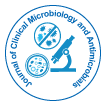

NILESH KULTHE
Purpose Diabetes mellitus (DM) is a known threat to healthcare worldwide, with increasing prevalence despite multiple treatment options. India is only 2nd to China, in terms of prevalence of DM, with a prevalence rate of around 10%. The HbA1c levels are more important in diabetic patients since it reflects the average blood sugar control over the past 1-2 months and is an independent predictor of mortality and morbidity in patients with type II DM. This study was conducted to evaluate the role of Gudmar, Daruharidra and Yashtimadhu Kwath on Glycosylated hemoglobin (HbA1c) in Type-II DM Patients. Methods The study was conducted from March 2018 to June 2019, Data of Type II DM patients who had received minimum 6 CDC sittings over 90 days(±15 days) and followed low-carb diet plan in the out-patient departments(OPDs) at Madhavbaug clinics in Mumbai, Maharashtra was identified. The patients were administered with Panchkarma therapy namely Snehana i.e. oleation, Swedana i.e. passive heat therapy and Basti of Gudmaar (Gymnema sylvestre), Daruharidra (Berberis aristate) and Yashtimadhu (Glycyrrhiza glabra) 100 ml Kwatha i.e. per rectal drug administration. In this study the variables like HbA1c, weight, BMI, SBP and DBP and dependency on medications were assessed on day 1 and day 90 of CDC program. Results Out of 12 patients, males (6) and females (6) were considered for analysis. There was significant improvement in HbA1c by 2% (from 8.78±2.2 to 6.78±1.37; p<0.001), weight by 7.15 kg (from 59.85±9.35 to 52.7±7.73, p<0.001). BMI (from 24.32±3.58 to 21.27±2.56; p<0.001), Abdominal girth (from 81.71±7.87 to 75.71±6.52; p<0.001) and SBP (from 134.29±6.46 to 127.86±4.26; p<0.01) also showed significant reduction. There was reduction in DBP, but it was not significant (p<0.34). Dependency on concomitant medicines was reduced, with the number of patients on no concomitant medicines increasing from 16% to 66%. Conclusion Per-rectal use of Gudmar, Daruharidra and Yashtimadhu Kwath found to be efficacious by reducing HbA1c in Type-II diabetic patients.